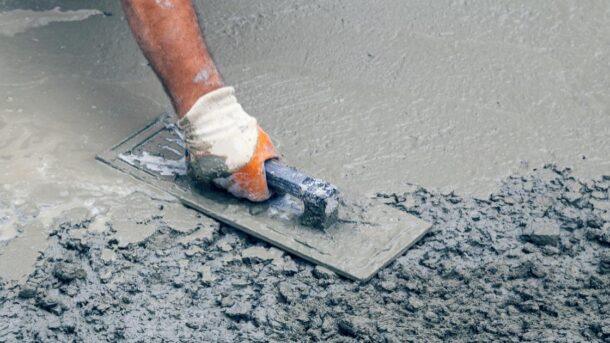Concrete used in construction has an enormous influence on its final result. By choosing an appropriate mix design, a strong and long-lasting product can be achieved for various uses.
Specialist concrete can be manufactured in an offsite production environment and delivered directly to construction sites for use, saving both time and improving quality control.
1. Plain Concrete
Concrete slabs Melbourne is an incredibly flexible construction material used for everything from sidewalks to homes. Composed of aggregate (discrete lumps) and binder (cement), its mix can be tailored specifically to individual requirements by altering its proportions of materials.
Concrete is strong under compression but lacks sufficient tensile strength. To increase this aspect, concrete can be reinforced with steel rebar, increasing both its compressive strength and tensile strength to provide resistance against stress over long spans of time.
Since concrete is such a heavy, bulky material, contractors tend to purchase it in large amounts in order to minimize transportation costs and ensure they have enough to complete their projects. To store it efficiently in temperature-controlled conditions requires efficient storage management strategies; supply and demand often determines prices; thus those purchasing concrete need relationships with traders so as to get the best prices available.
2. High-Density Concrete
High-density concrete (HD) is a type of concrete which boasts an increased density than regular concrete. It can be constructed using various forms of heavy aggregates and often finds use in nuclear reactors for radiation shielding purposes.
HD concrete has properties similar to standard concrete in terms of strength, permeability and modulus of elasticity. When creating HD concrete it is crucial that proper-sized and graded coarse aggregates are used to ensure uniform consolidation as well as good water control.
Preplaced aggregate method concretes are designed to minimize segregation of coarse aggregate, particularly steel punchings or shot, and reduce drying shrinkage, while simultaneously producing concrete with uniform density and composition – especially important when used for radiation shielding applications.
3. Rapid Setting Concrete
Rapid-setting concrete mixes are designed without the need for pre-mixing or staging, enabling construction crews to begin work quickly without preliminaries such as pre-mixing. This reduces construction times significantly while helping project managers meet deadlines easily.
As with regular concrete, this mix uses a ratio of 1:2:4 between cement, aggregates and water – ideal for projects requiring medium tensile strength like pavements or home building.
This type of concrete is widely renowned for its ability to withstand fires and heat, providing rescuers with enough time to act and save lives. Furthermore, this material does not absorb or conduct heat well and therefore prevents fires from spreading throughout a structure.
4. Fluid Concrete
Concrete has become a vital material in modern construction, used to construct buildings, roads, dams and bridges. Concrete consists of filler (such as gravel or crushed stone) and binder components; its filler typically made up of gravel whereas its binder component contains cement mixed with water for binding properties.
Normal concrete is a standard mix design using a ratio of 1:2:4, consisting of one part cement, two parts aggregates, and four parts water. It is typically employed when building pavements or structures where high tensile strength is not necessary.
Fiber-reinforced concrete is a stronger form of concrete that uses steel wires or rods as reinforcement, to increase its tensile strength and make it suitable for airport runways and industrial floors. Fibers increase flexibility, tensile strength and resilience – however special care must be taken when using these types of fiber as it reacts with concrete and requires special handling to avoid unexpected consequences.
5. Shotcrete
Shotcrete (or gunite) can be used to repair and replace damaged pipes due to its resistance to high temperatures and corrosion, plus its ease and speed of application compared with traditional concrete without needing formwork.
Dry or wet-mix concrete applications can be carried out. With dry-mix applications, all dry materials such as cement, aggregate and additive are combined in an industrial mixer before being pneumatically transported through a hose to be conveyed pneumatically via pneumatic conveying systems to a mixing nozzle where water injection occurs through an injector ring.
Wet-mix shotcrete differs from dry-mix shotcrete by keeping early products of cement hydration separate from aggregate, delaying their deposit until after impact with the surface. Both processes can be tailored for specific job site needs with chemical additives like acceleration retarders and corrosion inhibitors that meet those demands.




